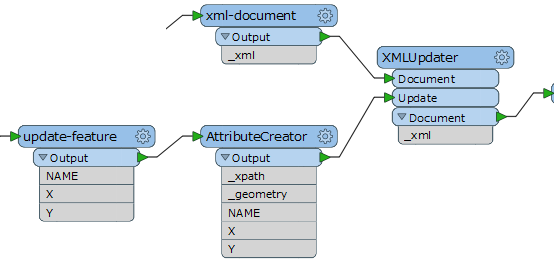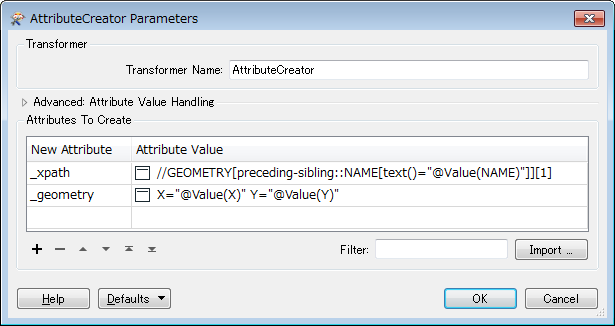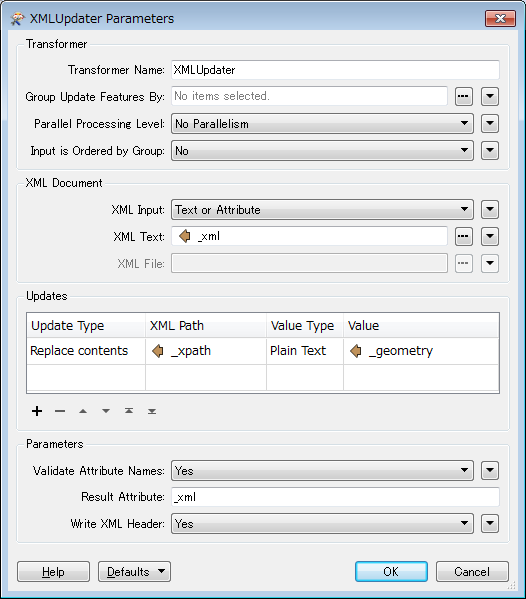I have the some features and its coordinates in excel file and have an XML with the same features. I need to update the coordinates from excel to XML. Please suggest me the transformers and the process to update the geometry coordinates from excel to XML. I have point and linear features also. Please suggest. Thanks in advance.
Solved
Update geometry attribute from Excel to XML
Best answer by takashi
Hi @chagantisasikir, as @itay suggested at first, the XMLUpdater can be used to update XML in general but it's hard to provide a solution that can be applied directly to your XML, since the concrete parameters setting should be considered depending on the actual XML schema.
Just an example. If your XML schema is the same as this example,
<?xml version="1.0"?>
<dataset>
<NAME>AAA</NAME>
<GEOMETRY>X="123.456" Y="789.123"</GEOMETRY>
<NAME>XXX</NAME>
<GEOMETRY>X="456.789" Y="123.456"</GEOMETRY>
<NAME>ZZZ</NAME>
<GEOMETRY>X="789.123" Y="456.789"</GEOMETRY>
</dataset>
you can update the value of GEOMETRY element specified by the NAME with this workflow.



See here to learn more about XPath: XPath Tutorial
This post is closed to further activity.
It may be an old question, an answered question, an implemented idea, or a notification-only post.
Please check post dates before relying on any information in a question or answer.
For follow-up or related questions, please post a new question or idea.
If there is a genuine update to be made, please contact us and request that the post is reopened.
It may be an old question, an answered question, an implemented idea, or a notification-only post.
Please check post dates before relying on any information in a question or answer.
For follow-up or related questions, please post a new question or idea.
If there is a genuine update to be made, please contact us and request that the post is reopened.








